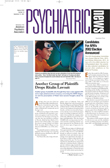Not long ago, an executive editor at United Press International (UPI) lost an old friend—a teacher—to suicide. The newspaper in the town where the teacher lived reported on his death and described his life in detail, yet did not mention the cause of his death. Had the newspaper done the right thing by not publishing the cause of death? In spite of his many years in journalism, the UPI editor wasn’t sure.
Indeed, members of the media need more guidance on how to report suicides, according to suicide authorities from the American Foundation for Suicide Prevention in New York City and the Annenberg Public Policy Center at the University of Pennsylvania. At a press conference in Washington, D.C., in August they unveiled recommendations on how to report suicides. Representatives of these two groups had devised the recommendations with other suicide authorities from the Office of the Surgeon General, the American Association of Suicidology, the National Institute of Mental Health, and others.
What are some of the recommendations?
First off, reports on deaths by suicide should include the cause of death. Herbert Hendin, M.D., a professor of psychiatry at New York Medical College and medical director of the American Foundation for Suicide Prevention, explained at the press conference that if a story about someone’s death is important enough to publish, then there shouldn’t be any harm in mentioning that suicide was the cause of death, any more than there would be harm in mentioning cancer or heart disease as the cause. In fact, he opined, such a story would be incomplete if the cause of death were not included. In contrast, reporters should be very careful about how they report the suicide.
For one thing, they should not glamorize or romanticize deaths by suicide, as one New York Times reporter did when he described a double suicide by two eighth graders as a Romeo-and-Juliet tragedy. The reason is that glamorizing or romanticizing deaths by suicide can lead to copycat suicides, evidence suggests. For example, there was a 12 percent increase in suicides in the United States in the month after the media reported that movie star Marilyn Monroe had killed herself. This 12 percent increase translated into some 200 extra people taking their lives. A number of them had left suicide notes saying that they were imitating Monroe.
For another thing, reporters should not attribute suicides to individual stresses in a person’s life, such as a breakup in a relationship or the loss of a job, but rather to the deeper cause, which is probably mental illness with or without substance abuse. This way, Hendin explained, the true cause or causes are revealed and, in addition, readers, viewers, or listeners at risk of suicide are being encouraged to seek help for their own mental illness or mental illness-substance abuse problem.
As for the methods of suicide used, reporters should not mention them. Doing so can give suicide-vulnerable readers, viewers, or listeners ideas about how to kill themselves. In fact, there is evidence not only that this is the case, but also that eliminating mention of the methods of suicide can reduce the number of suicides. For instance, after the implementation of the subway system in Vienna in 1978, it became increasingly used as a means of committing suicide. This increase, coupled with the media reporting the events in a dramatic way, led the Austrian Association for Suicide Prevention (AASP) to kick off a campaign in mid-1987 to convince the media to report subway suicides less dramatically. The number of subway suicides and of subway-suicide attempts dropped more than 80 percent from the first to the second half of 1987—that is, after the AASP media campaign started. Moreover, subway suicides and subway-suicide attempts remained at this lower level during five subsequent years of follow-up.
Here are some of the other recommendations for the media:
• Avoid referring to suicides in headlines.
• Contrast “suicide deaths” with “nonfatal attempts” rather than using terms such as “successful,” “unsuccessful,” or “failed.”
• Describe the deceased as “having died by suicide” rather than as “having committed suicide,” since the latter expression connotes sinful behavior to some people.
Thanks to a grant from the Robert Wood Johnson Foundation, the American Foundation for Suicide Prevention and the Annenberg Public Policy Center will be disseminating the recommendations to the media during the coming months.
The recommendations are posted on the Web sites of the American Foundation for Suicide Prevention at www.afsp.org/education/new_recommendations.htm and the Annenberg Public Policy Center at www.appcpenn.org. ▪
